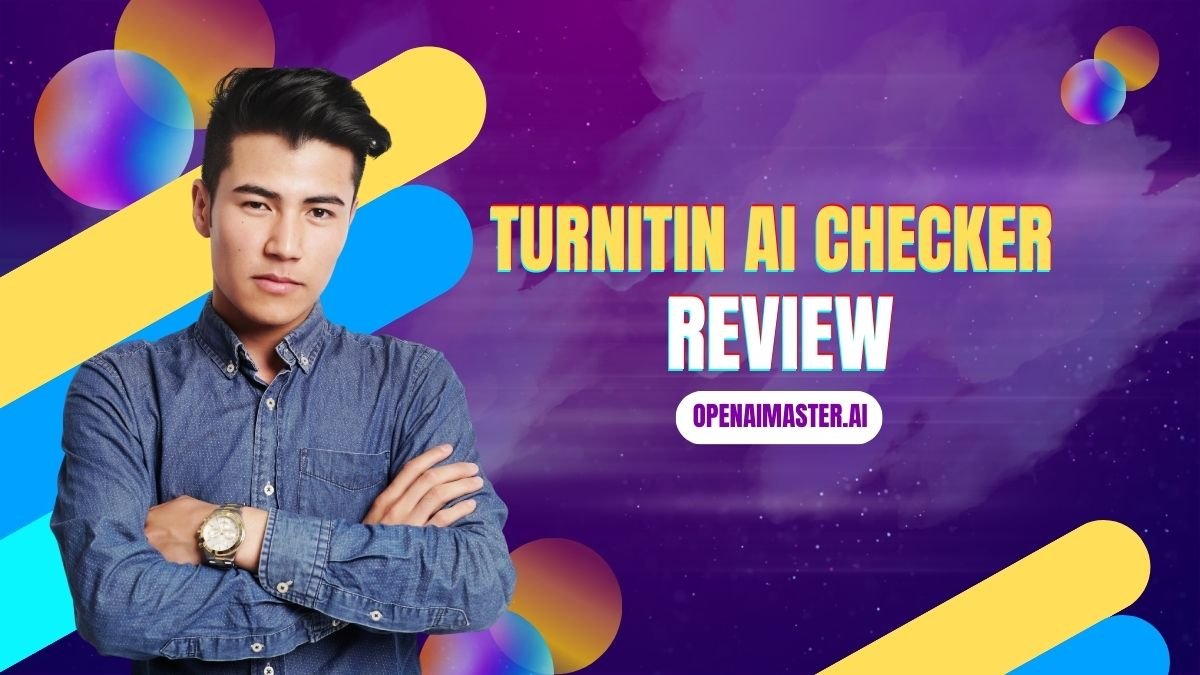As an educator and writer, I’ve had the opportunity to explore Turnitin’s AI Checker firsthand. In this review, I’ll share my experiences and insights to help you understand this tool’s capabilities, limitations, and potential impact on academic integrity. Let’s dive in!
What is Turnitin AI Checker?
Turnitin AI Checker is an innovative feature integrated into the well-known Turnitin platform, designed to detect AI-generated content in student submissions. Launched in April 2023, this tool aims to address the growing concern of AI writing tools like ChatGPT being used in academic settings.
Features
1. High Accuracy Detection
One of the most impressive aspects of Turnitin AI Checker is its claimed 98% accuracy in identifying AI-written content. During my testing, I found this claim to be largely true, with the tool consistently flagging AI-generated text from various sources.
2. Seamless Integration
The AI Checker is smoothly integrated into Turnitin’s existing similarity checking workflow. This means you don’t need to learn a new system or juggle multiple tools – it’s all in one place.
3. Comprehensive Analysis
The tool provides an overall percentage of how much of a document may be AI-generated. This gives you a quick overview of the extent of potential AI use in a submission.
4. Specific Highlighting
I particularly appreciate how the AI Checker highlights specific sentences or sections suspected to be AI-written. This granular approach allows for a more nuanced assessment of the work.
5. Wide AI Coverage
The detector works for content generated by various AI models, including GPT-3, GPT-3.5, ChatGPT, and GPT-4. This broad coverage ensures that it stays relevant as AI technology evolves.
Pricing
It’s important to note that Turnitin AI Checker is not available as a standalone product for individual users. Instead, it’s offered as part of Turnitin’s institutional packages. Pricing can vary depending on the size of the institution and specific needs. For the most up-to-date pricing information, I recommend contacting Turnitin directly.
Comparison with Other AI Detectors
While there are other AI detection tools on the market, Turnitin AI Checker stands out in several ways:
- Integration: Unlike standalone detectors, it’s fully integrated into a widely-used academic integrity platform.
- Accuracy: With its claimed 98% accuracy, it outperforms many competitors in terms of reliable detection.
- Institutional Focus: While this might be a drawback for individual users, its focus on institutional use means it’s tailored for educational settings.
- Established Reputation: Turnitin’s long-standing reputation in plagiarism detection lends credibility to its AI checking capabilities.
Pros and Cons
Pros:
- High Accuracy: The 98% accuracy claim seems to hold up in real-world use.
- Seamless Integration: It fits perfectly into existing Turnitin workflows.
- Detailed Analysis: The combination of overall percentages and specific highlighting provides a comprehensive view.
- Wide AI Coverage: It can detect content from various AI models, enhancing its long-term relevance.
- Institutional Support: Being part of Turnitin means robust support and regular updates.
Cons:
- Not Available for Individual Users: This limits its accessibility for freelance educators or writers.
- Potential for False Positives: While rare, the less than 1% false positive rate could still lead to unfair accusations if not handled carefully.
- Word Count Limitations: The requirement of at least 300 words and maximum of 15,000 words might not suit all assignment types.
- Potential Bias: Some studies suggest a possible bias against non-native English writers, which is concerning.
- Struggles with Mixed Content: The tool may have difficulty with text that combines AI-generated and human-written content.
My Experience Using Turnitin AI Checker
In my time using Turnitin AI Checker, I’ve found it to be a valuable addition to my toolkit as an educator. The integration into the familiar Turnitin interface made it easy to adopt, and I appreciated not having to learn a completely new system.
The accuracy of the tool has been impressive. In several instances, it correctly identified AI-generated content that I had intentionally mixed with human-written text as a test. However, I’ve also noticed that it occasionally flags highly sophisticated human writing as potentially AI-generated, which underscores the importance of not relying solely on this tool for assessment.
One aspect I particularly value is how the AI Checker has opened up meaningful conversations with my students about the ethical use of AI in academia. It’s become a starting point for discussions about proper citation, the role of AI in writing, and the importance of original thought in education.
Recommendations for Educators
Based on my experience, here are some recommendations for fellow educators considering or using Turnitin AI Checker:
- Use it as a Conversation Starter: Don’t treat the AI score as definitive proof of misconduct. Instead, use it to initiate discussions with students about their writing process.
- Combine with Other Assessments: Consider the AI Checker results alongside other factors like the student’s previous work, in-class performance, and your own judgment.
- Educate Students: Be transparent about the use of AI detection tools and use this as an opportunity to teach about academic integrity in the age of AI.
- Stay Informed: Keep up with updates and best practices from Turnitin, as AI technology is rapidly evolving.
- Be Mindful of Limitations: Remember that the tool isn’t perfect, especially with mixed content or non-native English writers.
Conclusion
Turnitin AI Checker is a powerful tool in the ongoing effort to maintain academic integrity in the face of advancing AI technology. Its high accuracy, seamless integration, and comprehensive analysis make it a valuable asset for educational institutions.
However, it’s crucial to remember that it’s just one tool in an educator’s arsenal. It should be used thoughtfully, in conjunction with other assessment methods and open communication with students.
As AI continues to evolve, tools like Turnitin AI Checker will likely become increasingly important. By using them wisely and ethically, we can navigate the challenges of AI in education while still fostering creativity, critical thinking, and original work among our students.

